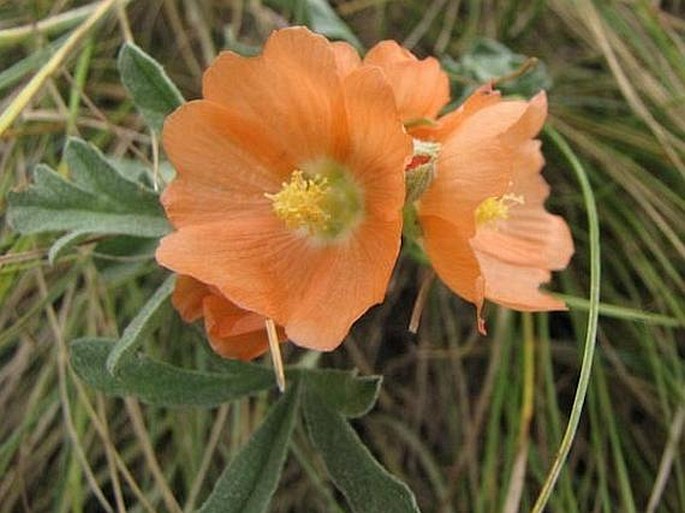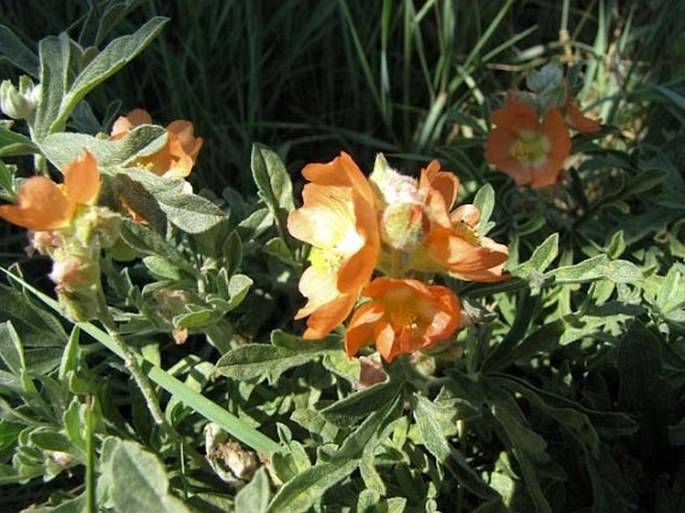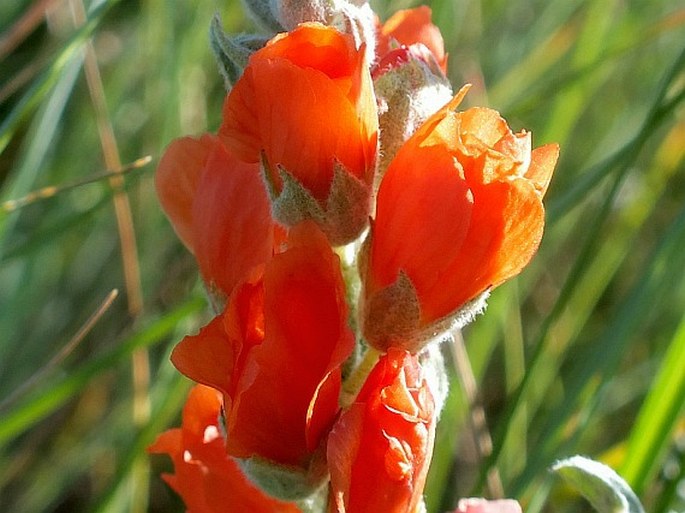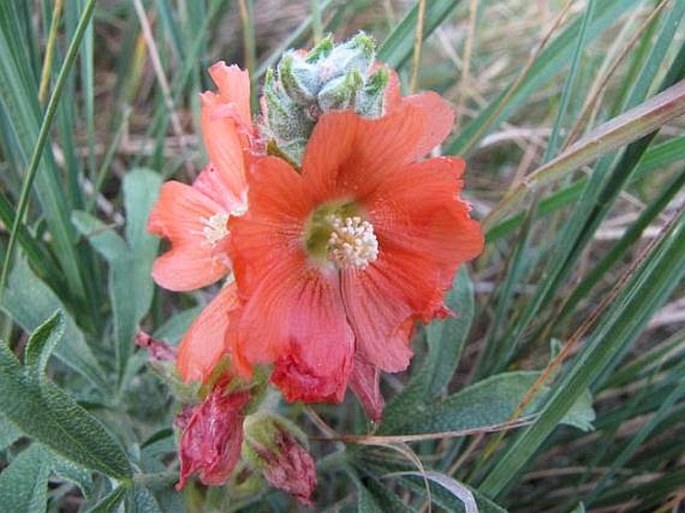Syn.: Cristaria coccinea (Nutt.) Pursh, Malva coccinea Nutt., Malvastrum coccineum (Nutt.) A. Gray, Malveopsis coccinea (Nutt.) Kuntze, Nototriche coccinea (Nutt.) Nieuwl. et Lunell, Sida coccinea (Nutt.) DC.
Family: Malvaceae Juss.

Distribution: North American species found in the western part of the continent but does not reach the Pacific coast. Its region exists from south of British Columbia and Manitoba across the American prairies to the Rocky Mountains, to Mexican Chihuahua. Of two subspecies, the nominate one occurs throughout the full area and S. c. subsp. elata in southern part only.
Ecology: Dry prairie grasslands and badlands. Blooms from May to August.
Description: Biennial to perennial herb, 10–20(–30) cm tall. Stem ascending to erect, hairy. Leaves alternate, 2–5 cm long, palmately divided into 3–5 wedge-shaped lobes, hairy. Inflorescence in a short few-flowered raceme; flowers 10–25 mm across, pedicelate, pentamerous; calyx hairy, tips triangular; petals brick red to orange. Fruit is a schizocarp breaking into 10+ mericarps, 1-seeded each.
Threat and protection: Listed as endangered in state of Iowa.
Use: Native tribes prepared a brew which was supposed to protect against witches. Its use was even for medicinal purposes to stop bleeding, to cure skin sores, relieve sore throat and stomach ache.
Note: Genus Sphaeralcea includes some 60 species, mostly North American.




These images were taken in Canada, Alberta, Calgary, Nose Hill Park (summer 2013).


